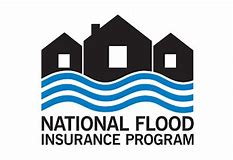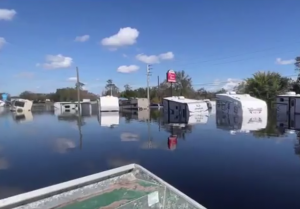More consumer choice
 FEMA has released details on its new simplified homeowner flood insurance form to streamline the application process and encourage more Americans to sign-up for federal flood insurance. The new specialized form would do away with the existing one-size fits all application and flood policy, allowing homeowners to consider flood risks specific to their property before choosing a level of coverage that corresponds with their needs. While the proposed rule and summary make no mention of FEMA’s Risk Rating 2.0, its more actuarially-sound model for better pricing risk to rate for specific properties, it appears this proposed form is a natural outgrowth of that effort.
FEMA has released details on its new simplified homeowner flood insurance form to streamline the application process and encourage more Americans to sign-up for federal flood insurance. The new specialized form would do away with the existing one-size fits all application and flood policy, allowing homeowners to consider flood risks specific to their property before choosing a level of coverage that corresponds with their needs. While the proposed rule and summary make no mention of FEMA’s Risk Rating 2.0, its more actuarially-sound model for better pricing risk to rate for specific properties, it appears this proposed form is a natural outgrowth of that effort.
The process starts by helping the homeowner understand their particular risk before finding the right coverage. FEMA wants to allow homeowners to customize their coverage using five proposed policy endorsements:
- Increased Cost of Compliance Coverage
- Actual Cash Value Loss Settlement
- Temporary Housing Expense Coverage
- Basement Coverage
- Builder’s Risk

Hurricane Ian flooding along the Peace River in Arcadia, Florida, October 6, 2022. Courtesy DeSoto County Sheriff’s Office
Prior to this form, the National Flood Insurance Program (NFIP) has only offered the Dwelling Form to serve all customers – single and multi-family residences, landlords, renters, condo units, and mobile homes. This new form also offers enhanced comprehensive default coverages. For example, while much of the default coverage proposed would mirror existing default coverage in the Dwelling Form, FEMA and the NFIP are proposing to shift the default loss settlement from actual cash value to replacement cost value “to help policyholders more effectively and more fully recover from loss.”
Florida has the largest share of NFIP policies with 1.7 million of the almost 4.7 million policies nationwide. Federally-backed home mortgages require flood insurance, so this proposal will have wide impacts. Comments can be submitted from Feb. 6 to April 8 on www.regulations.gov Docket ID: FEMA-2024-0004. You can also read the public comments that others have submitted.
Florida should take a lesson from FEMA here in allowing customers greater choice in their property insurance policies. We have very descriptive language in state statute, for example, on roof coverage. Insurance companies should be able to build their policies to address market needs without statutory intervention on mandatory coverage. FEMA in its NFIP proposal, recognizes that consumers need and want to build the coverage that is best for them and their pocketbook.
LMA Newsletter of 2-19-24

